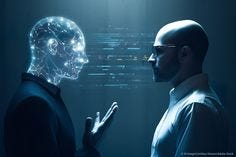Regarding AI, there is a common misperception. It is believed that, if not already, then in the near future, machines will be able to think and behave like people. If we'll ever get to that stage, we're actually a very, very long way from that scenario. And the reason for this is because AI presents a number of extremely challenging issues.
Machine learning is a modern technique that trains a computer to perform a certain task, but only for one task or object at a time. Even though the performance—for instance, when describing an image—can be rather impressive, it still only addresses one issue.
AI isn't what you would believe it is, and it may never become the menace that some people have envisioned. This is the reason.
Consider the bee as an example. A bee is an organism that exists and works in its natural habitat on a daily basis. It gathers food, associates with other bees, and performs specialized tasks inside the hive. If you take the bee and place it somewhere else, far away from its home, it will find food, build a nest, and eventually find other bees to form a colony.
Your smartphone is touted as having 100 bits of artificial intelligence (AI) built into it, yet if you leave it in a field far from home, the battery will run out in a few hours. The apparatus malfunctions. It is powerless to support itself or do anything on its own.
If we ever get to artificial intelligence (AI), it will be distant in the future, according to the movies. However, the notion that AI has the capacity to become both sentient and malevolent makes for an intriguing storyline for a film.
The fundamental premise of these stories is actually quite straightforward: an AI's objectives are at odds with those of humanity. A well-known example is given to demonstrate how this operates. Create paper clips as efficiently as possible by programming a strong AI-enabled machine. If there is no cap on the quantity of paper clips required, the machine will keep making clips out of available materials before mining resources and taking over production until it has run out of minerals it can make anything from. According to this hypothetical tale, the machine might have wiped off any life form that could have interfered with or been utilized in the production of paper clips.
The narrative demonstrates that the primary cause of AI's risks is misaligned goals. Machines have tasks to complete, or objectives, to achieve. The underlying issue is not the machine itself, but rather the people who decide what the machine should aim toward. AI does not automatically govern anything outside of its own programming, even if it is "smarter" than humans in the sense that it can solve issues much more quickly. The decision-making process by humans on the intended objectives of an AI platform is at the heart of the problem and the potential for harm.


